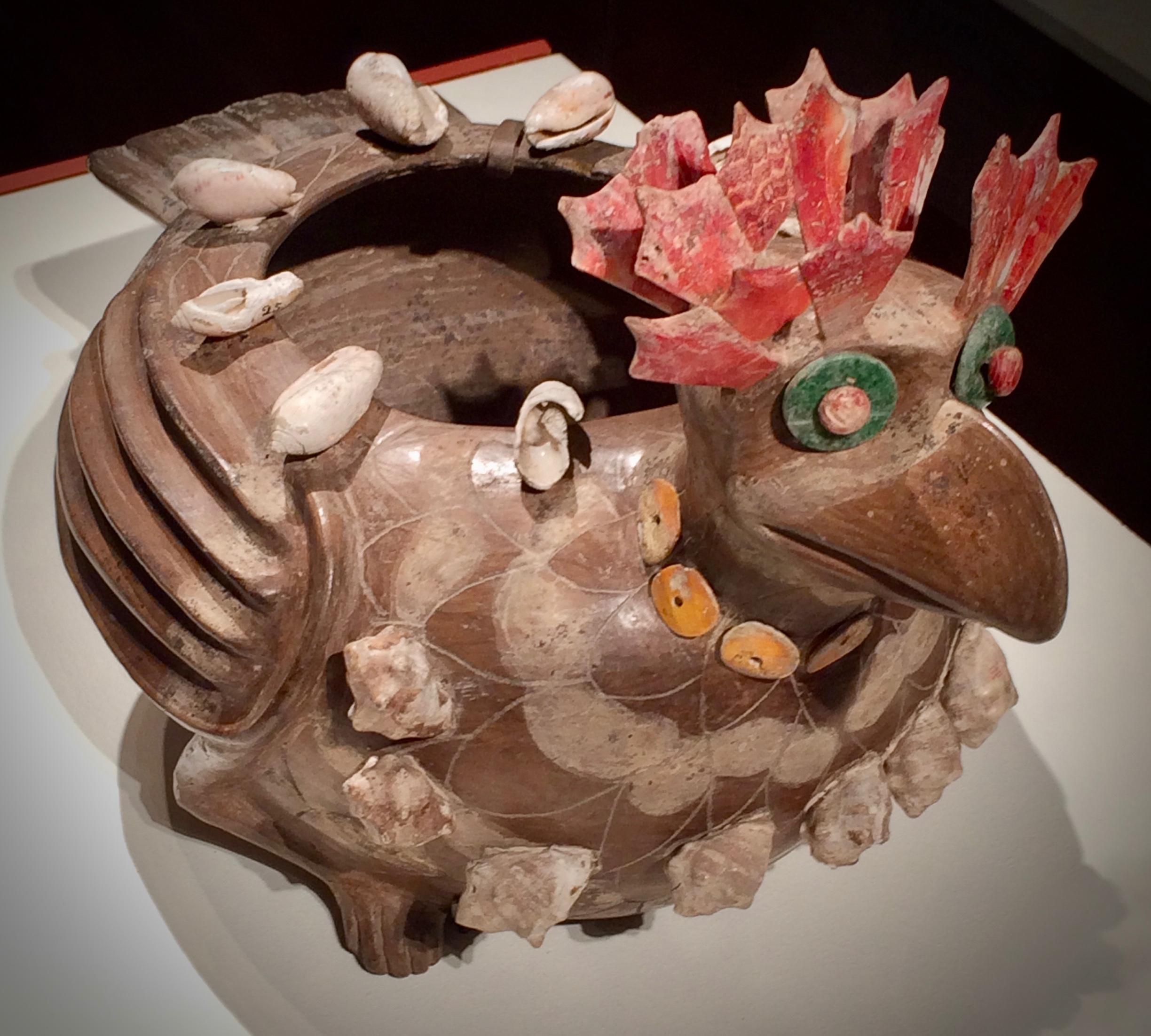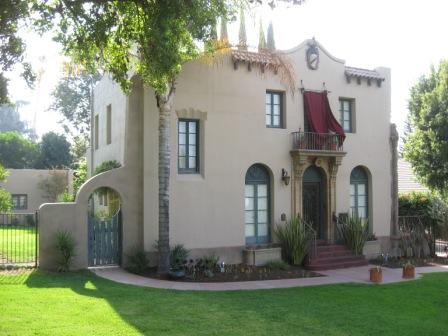|
Helen Katharine Forbes
Helen Katharine Forbes (February 3, 1891 – May 27, 1945) was a Californian artist and arts educator specializing in etching, murals and painting. She is best known for western landscapes, portrait paintings, and her murals with the Treasury Section of Fine Arts and Work Progress Administration (WPA). Forbes was skilled in painting in oil, watercolor, and egg tempera. She painted landscapes of Mexico, Mono Lake and the Sierras in the 1920s, desert scenes of Death Valley in the 1930s, and portraits and still-lifes. Early life Helen Katharine Forbes was born February 3, 1891, in San Francisco, California, to Stanley Forbes and Kate Skells. At age 12, she moved to Palo Alto, California, with her family and attended Castilleja School for Girls, from which she graduated in 1908. Her grandfather was Andrew Bell Forbes, a California pioneer that arrived to the state with the Argonauts in the 1849 California Gold Rush. She attended Mark Hopkins Art Institute, where she studied with ... [...More Info...] [...Related Items...] OR: [Wikipedia] [Google] [Baidu] |
Fleishhacker Zoo
The San Francisco Zoo is a zoo located in the southwestern corner of San Francisco, California, between Lake Merced and the Pacific Ocean along the Great Highway. The SF Zoo is a public institution, managed by the non-profit San Francisco Zoological Society, a 501(c)(3) organization. As of 2016, the zoo housed more than one thousand individual animals, representing more than 250 species. It is noted as the birthplace of Koko the gorilla, and, since 1974, the home of Elly, the oldest black rhinoceros in North America. The zoo's main entrance (one located on the north side across Sloat Boulevard and one block south of the Muni Metro L Taraval line) is to the west, on the ocean side. History Originally named the Fleishhacker Zoo after its founder, banker and San Francisco Parks Commission president Herbert Fleishhacker, planning for construction began in 1929, on the site adjacent to what was once the largest swimming pool in the United States, the Fleishhacker Pool. The area w ... [...More Info...] [...Related Items...] OR: [Wikipedia] [Google] [Baidu] |
University Of California, Berkeley
The University of California, Berkeley (UC Berkeley, Berkeley, Cal, or California) is a public land-grant research university in Berkeley, California. Established in 1868 as the University of California, it is the state's first land-grant university and the founding campus of the University of California system. Its fourteen colleges and schools offer over 350 degree programs and enroll some 31,800 undergraduate and 13,200 graduate students. Berkeley ranks among the world's top universities. A founding member of the Association of American Universities, Berkeley hosts many leading research institutes dedicated to science, engineering, and mathematics. The university founded and maintains close relationships with three national laboratories at Berkeley, Livermore and Los Alamos, and has played a prominent role in many scientific advances, from the Manhattan Project and the discovery of 16 chemical elements to breakthroughs in computer science and genomics. Berkeley is ... [...More Info...] [...Related Items...] OR: [Wikipedia] [Google] [Baidu] |
California Society Of Printmakers
The California Society of Printmakers (CSP) is the oldest continuously operating association of printmakers and friends of printmakers in the United States. CSP is a non-profit arts organization with an international membership of print artists and supporters of the art of fine printmaking. CSP promotes professional development and opportunity for printmakers, and educates artists and the public about printmaking. New members are admitted by portfolio review. Friends, Institutional and Business members are admitted by fee. CSP is based in the San Francisco Bay Area, California. Early history: American print clubs (printmakers societies) and California Society of Etchers (CSE) American print clubs or printmaking societies were prolific in the 19th century. Their impetus was primarily exhibition, technical exchange, shared equipment, and the promotion of printmaking as a fine art, as opposed to a method of reproducing images. The invention of photography meant that reproduction of ... [...More Info...] [...Related Items...] OR: [Wikipedia] [Google] [Baidu] |
National Society Of Mural Painters
The National Society of Mural Painters (NSMP) is an American artists' organization originally known as The Mural Painters. The charter of the society is to advance the techniques and standards for the design and execution of mural art for the enrichment of architecture in the United States. Background The NSMP was founded in 1895, in an era of Beaux-Arts architecture in America, a time when public architecture was integrated with murals, sculpture, mosaics and other artwork, coordinated and themed to assert the identity of the building. Parallel organizations associated with the same principles of integrated public art include the National Sculpture Society, which originally included a large percentage of architectural sculptors, and the Beaux-Arts Institute of Design, founded in 1916 as the teaching wing of the Society of Beaux-Arts Architects. Still in existence after more than a hundred years, the society presents exhibitions and organizes competitions. The NSMP is a memb ... [...More Info...] [...Related Items...] OR: [Wikipedia] [Google] [Baidu] |
San Francisco Museum Of Modern Art
The San Francisco Museum of Modern Art (SFMOMA) is a modern and contemporary art museum located in San Francisco, California. A nonprofit organization, SFMOMA holds an internationally recognized collection of modern and contemporary art, and was the first museum on the West Coast devoted solely to 20th-century art. The museum's current collection includes over 33,000 works of painting, sculpture, photography, architecture, design, and media arts, and moving into the 21st century.Collection at sfmoma.org. The collection is displayed in of exhibition space, making the museum one of the largest in the United States overall, and one of the in the world for modern and contemporary art. Found ... [...More Info...] [...Related Items...] OR: [Wikipedia] [Google] [Baidu] |
De Young (museum)
The de Young Museum, formally the M. H. de Young Memorial Museum, is a fine arts museum located in San Francisco, California. Located in Golden Gate Park, it is a component of the Fine Arts Museums of San Francisco, along with the Legion of Honor. The de Young is named for early San Francisco newspaperman M. H. de Young. History The museum opened in 1895 as an outgrowth of the California Midwinter International Exposition of 1894 (a fair modeled on the Chicago World's Columbian Exposition of the previous year). It was housed in an Egyptian revival structure which had been the Fine Arts Building at the fair. The building was badly damaged in the 1906 San Francisco earthquake, and was closed for a year and a half for repairs. Before long, the museum's steady development called for a new space to better serve its growing audiences. Michael de Young responded by planning the building that would serve as the core of the de Young facility through the 20th century. Louis Christian Mul ... [...More Info...] [...Related Items...] OR: [Wikipedia] [Google] [Baidu] |
Grizzly Bear
The grizzly bear (''Ursus arctos horribilis''), also known as the North American brown bear or simply grizzly, is a population or subspecies of the brown bear inhabiting North America. In addition to the mainland grizzly (''Ursus arctos horribilis''), other morphological forms of brown bear in North America are sometimes identified as grizzly bears. These include three living populations—the Kodiak bear (''U. a. middendorffi''), the Kamchatka bear (''U. a. beringianus''), and the peninsular grizzly (''U. a. gyas'')—as well as the extinct California grizzly (''U. a. californicus''†), Mexican grizzly (formerly ''U. a. nelsoni''†), and Ungava-Labrador grizzly (formerly ''U. a. ungavaesis''†). On average, grizzly bears near the coast tend to be larger while inland grizzlies tend to be smaller. The Ussuri brown bear (''U. a. lasiotus''), inhabiting Russia, Northern China, Japan, and Korea, is sometimes referred to as the "black grizzly", although it is no more closely ... [...More Info...] [...Related Items...] OR: [Wikipedia] [Google] [Baidu] |
Monrovia, California
Monrovia is a city in the foothills of the San Gabriel Mountains in the San Gabriel Valley of Los Angeles County, California, United States. The population was 37,931 at the 2020 census. Monrovia has been used for filming TV shows, movies and commercials. History Monrovia is the fourth-oldest general-law city in Los Angeles County and the L.A. Basin (after Los Angeles, Santa Monica, and Pasadena, all now charter cities). Incorporated in 1887, it has grown from a sparse community of orange ranches to a residential community of over 37,000. Around 500 BC, the Tongva, a band of Shoshonean-speaking Indians, established settlements in what is now the San Gabriel Valley. They were called the Gabrieliño Indians by early Spanish missionaries, a tribe of Mission Indians. The Tongva were not farmers; they gathered wild seeds, berries, and plants along rivers and in marshlands. Abundant oaks in the Valley, such as Coast live oak, Coast Live Oak and Interior live oak, Interior Live Oak ... [...More Info...] [...Related Items...] OR: [Wikipedia] [Google] [Baidu] |
Deer
Deer or true deer are hoofed ruminant mammals forming the family Cervidae. The two main groups of deer are the Cervinae, including the muntjac, the elk (wapiti), the red deer, and the fallow deer; and the Capreolinae, including the reindeer (caribou), white-tailed deer, the roe deer, and the moose. Male deer of all species (except the water deer), as well as female reindeer, grow and shed new antlers each year. In this they differ from permanently horned antelope, which are part of a different family (Bovidae) within the same order of even-toed ungulates (Artiodactyla). The musk deer (Moschidae) of Asia and chevrotains (Tragulidae) of tropical African and Asian forests are separate families that are also in the ruminant clade Ruminantia; they are not especially closely related to Cervidae. Deer appear in art from Paleolithic cave paintings onwards, and they have played a role in mythology, religion, and literature throughout history, as well as in heraldry, such as ... [...More Info...] [...Related Items...] OR: [Wikipedia] [Google] [Baidu] |
Susanville, California
Susanville (formerly known as Rooptown) is a town in and the county seat of Lassen County, California, United States. Susanville is located on the Susan River in the southern part of the county, at an elevation of . Its population is 16,728 as of the 2020 census, down from 17,947 from the 2010 census. Susanville, a former logging and mining town, is the site of two state prisons: the California Correctional Center, a minimum-medium security facility, which opened in 1963; and the High Desert State Prison, California (not to be confused with High Desert State Prison, Nevada), which opened in 1995. The Federal Correctional Institution, Herlong is nearby, having opened in 2001. The prisons and their effects on the community, including the addition of local jobs, were explored in the documentary ''Prison Town, USA'' (2007), aired on PBS. Nearly half the adult population of Susanville works at the three prisons in the area, where 6,000 people are incarcerated. [...More Info...] [...Related Items...] OR: [Wikipedia] [Google] [Baidu] |
Federal Art Project
The Federal Art Project (1935–1943) was a New Deal program to fund the visual arts in the United States. Under national director Holger Cahill, it was one of five Federal Project Number One projects sponsored by the Works Progress Administration (WPA), and the largest of the New Deal art projects. It was created not as a cultural activity, but as a relief measure to employ artists and artisans to create murals, easel paintings, sculpture, graphic art, posters, photography, theatre scenic design, and arts and crafts. The WPA Federal Art Project established more than 100 community art centers throughout the country, researched and documented American design, commissioned a significant body of public art without restriction to content or subject matter, and sustained some 10,000 artists and craft workers during the Great Depression. According to ''American Heritage'', “Something like 400,000 easel paintings, murals, prints, posters, and renderings were produced by WPA artists du ... [...More Info...] [...Related Items...] OR: [Wikipedia] [Google] [Baidu] |








.jpg)

